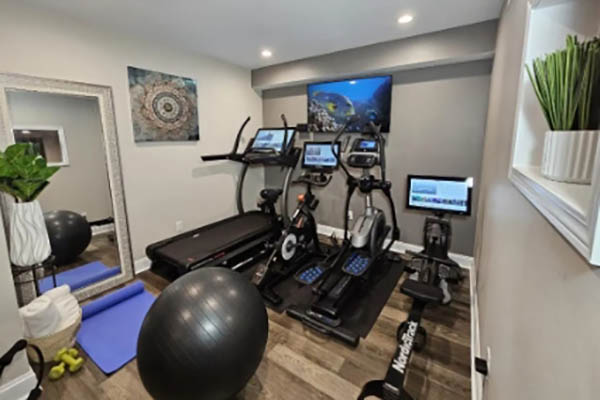With the rise of health and fitness consciousness, more people are turning to home gyms as a convenient way to maintain their exercise routines. Designing a home gym requires careful planning to ensure it meets your fitness needs and fits within your space. Whether you have a small corner in your living room or a dedicated room, creating an effective workout space is achievable with the right approach. Here’s a guide on how to design a home gym that is both functional and motivating.
1. Assess Your Space and Needs
Before you start buying equipment, it’s crucial to evaluate the available space and determine what type of exercises you plan to do. If you have a spare room, garage, or basement, you have the flexibility to set up a full-scale gym. For smaller spaces, such as a corner of your living room or bedroom, focus on multipurpose equipment that can be easily stored.
Consider the types of workouts you enjoy. Do you prefer cardio, strength training, yoga, or a combination? Your workout preferences will dictate the type of equipment you need. For example, prioritize weights and resistance bands if you enjoy strength training. If cardio is your focus, consider a treadmill or stationary bike.
2. Plan the Layout
Once you know your space and fitness goals, sketch a layout of your gym. Start by measuring the area to ensure you can accommodate all the equipment you want. Leave enough room around each piece of equipment for safe and comfortable use. If possible, designate specific zones for different types of exercise, such as a corner for cardio, an area for strength training, and a mat for stretching or yoga.
Keep in mind the importance of ventilation and lighting. Proper ventilation keeps the room fresh, especially during intense workouts, while good lighting can enhance the overall ambiance. Natural light is ideal, but if that’s not an option, install bright, overhead lights or lamps.
3. Choose the Right Equipment
Selecting the right equipment is key to creating an effective home gym. Start with the basics:
- Cardio Machines: Treadmills, stationary bikes, rowing machines, and ellipticals are great for cardiovascular workouts. Choose one that fits your space and budget.
- Strength Training Equipment: Dumbbells, kettlebells, resistance bands, and weight benches are versatile tools for strength training. Adjustable dumbbells can save space and money, as they replace multiple sets of weights.
- Flexibility and Recovery: Include a yoga mat for stretching, foam rollers for muscle recovery, and a stability ball for core exercises.
Consider multifunctional equipment like a power rack with a pull-up bar, which allows you to perform various exercises without needing separate machines.
4. Focus on Flooring
The right flooring is essential for safety and comfort. Rubber flooring is a popular choice for home gyms because it provides good shock absorption and is easy to clean. Foam tiles are another option, especially for lighter activities like yoga or stretching. Ensure your flooring is slip-resistant and provides adequate cushioning to protect your joints during exercise.
5. Incorporate Storage Solutions
Keeping your gym organized helps create a more inviting space. Install shelves or racks to store dumbbells, kettlebells, and medicine balls. Use hooks to hang resistance bands and jump ropes. Consider a small cabinet or bench with storage space for smaller items like yoga blocks, towels, and water bottles.
6. Add a Personal Touch
A gym should be a space that motivates and inspires you. Consider adding a sound system or speakers for music to keep you energized during workouts. Decorate the walls with motivational quotes, posters, or mirrors to create an open and inviting atmosphere. Mirrors are also great for checking your form during exercises.
7. Ensure Safety
Safety should always be a priority when designing a home gym. Make sure all equipment is stable and properly installed. Keep the area free from clutter to prevent trips and falls. It’s also a good idea to have a first aid kit nearby and know basic first aid procedures in case of an emergency.
8. Budget Considerations
Designing a home gym doesn’t have to break the bank. Start with essential equipment and gradually add more as your budget allows. Consider purchasing second-hand equipment or looking for deals online. Remember, the most important aspect of a home gym is that it meets your personal fitness needs.
Conclusion
Designing a home gym is a rewarding investment in your health and well-being. By carefully planning your space, choosing the right equipment, and creating an environment that motivates you, you can build a home gym that supports your fitness journey. Whether you have a dedicated room or just a small corner, a well-designed home gym can help you stay active and healthy from the comfort of your own home.
Post time: 09-02-2024




